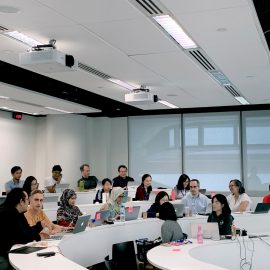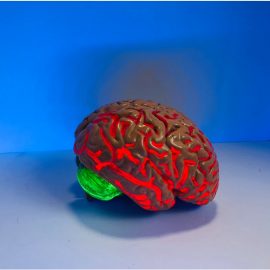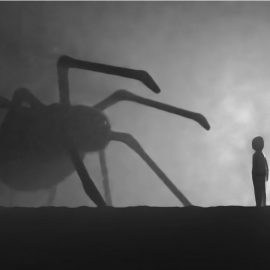

This article is an excerpt from the Shortform book guide to "My Stroke of Insight" by Jill Bolte Taylor. Shortform has the world's best summaries and analyses of books you should be reading.
Like this article? Sign up for a free trial here.
Does your past dictate your future? Can you rewire your mind and essentially shape who you are from now on?
In 1996, neuroscientist Jill Bolte Taylor suffered a stroke. During her recovery, she learned something incredibly valuable: understanding your mind lets you change the way you think and take responsibility for your emotional responses.
Read more to discover Taylor’s “stroke of insight” on how to control your thoughts and emotions.
Controlling Your Thoughts and Emotions
Though recovering from her stroke was a long, arduous, and often painful process, Taylor says she decided to view her stroke and recovery as a gift. Her experience taught her valuable lessons about the inner workings of the mind that she wanted to share with others. One of those lessons is how to control your thoughts and emotions.
In the process of rebuilding her cognitive functions, Taylor learned that it was entirely up to her which parts of her past she reclaimed or left behind. Taylor argues that she’s living proof of the plasticity of the human mind—that who you were in the past doesn’t strictly define who you can be in the future. She highlights the differences she discovered between her left and right hemispheres in terms of personality and emotion, and she suggests that, if you’re aware of how your different hemispheres influence your mental state, you can make the deliberate choice to control your thoughts and emotional processes.
(Shortform note: In The Brain That Changes Itself, Norman Doidge argues that neuroplasticity is a blessing and a curse when it comes to reframing your emotional responses. It’s only because of your brain’s plastic nature that you’re able to reshape your ways of thinking, but since your brain reallocates unused space, any neural paths you’re not used to using may be appropriated by other mental functions. For example, if you’ve formed the habit of viewing time spent with your family in a negative light, then the mental circuits for enjoying time with your family might have been directed elsewhere, such as enjoying a hobby or sport.)
For Taylor, this truth was thrown into stark relief when her stroke forced her completely into right-brain thinking for a significant period of time. As she worked to regain her left hemisphere’s functions, Taylor felt when the left brain’s emotional patterns began to resurface, and she questioned whether she wanted to bring all of her old personality back. After all, it became clear to her that her right hemisphere was the source of many of her positive emotions, such as happiness and empathy, while her left side housed her anger and judgmental tendencies.
(Shortform note: Despite Taylor’s subjective experience, a survey of neurological research studies shows little support for the theory that specific classes of emotions originate in different parts of the brain. Instead, the data support the view that emotions arise from networks of cells located throughout all areas of the brain. Further research shows that prior studies were flawed because they were conducted primarily on right-handed people. As discussed in the earlier section on brain lateralization, left- and right-handedness has been shown to signify different arrangements of cognitive functions between the left and right hemispheres.)
Taylor says that some of our “negative” feelings are intricately linked with the left brain’s cognitive functions, such as assigning cause and effect to sensory information. However, when growing into her new sense of self, Taylor worked to disentangle her higher left-brain functions from her old self’s previously ingrained emotional cycles. When she recognized judgmental or anxious thought patterns forming, she made the conscious choice to redirect her mind and frame her thoughts in a more calming light, which helped to create new neural pathways to replace the ones that existed before. In many ways, she was becoming a whole new person, and she learned to be deliberate about which pieces of her old life she kept or left behind.
(Shortform note: Taylor’s system of self-reconstruction is similar to the therapeutic practice of Internal Family Systems (IFS), as described by psychologist Richard Schwartz in No Bad Parts. In IFS, your mind is treated not as a single unit, but as a multiplicity of competing “selves,” almost like a family of personalities with complicated interpersonal dynamics. The goal of the practice isn’t to excise unwanted traits, but to untangle your disparate selves from each other and take conscious control of your emotional life.)

———End of Preview———
Like what you just read? Read the rest of the world's best book summary and analysis of Jill Bolte Taylor's "My Stroke of Insight" at Shortform.
Here's what you'll find in our full My Stroke of Insight summary:
- A neuroscientist's experience and observations after suffering from a stroke
- How the author's stroke helped her develop empathy and stillness
- How best to support stroke survivors






